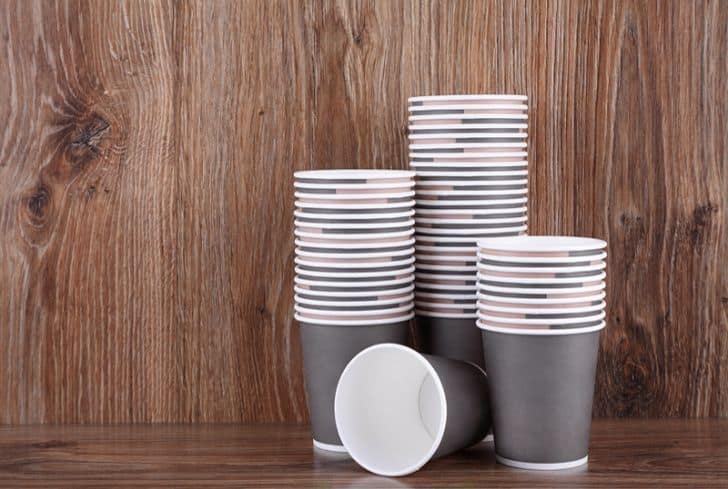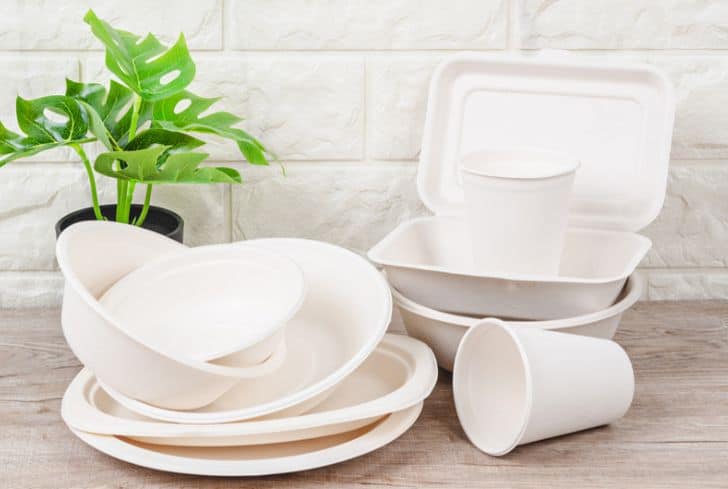Although there are claims and perhaps evidence that the world is leaning towards a paperless dispensation, paper is still very useful across industries. Its consumption in the United States has increased by more than a hundred percent in the past two decades.
This makes it important to ask, and commendable that you care to know the answer to the question, “is paper biodegradable?” In this article, you’ll know whether paper is biodegradable or non-biodegradable, alongside its effects on the ecosystem.
Read: Is Wax paper Biodegradable?
Is Paper Biodegradable or Non-Biodegradable?
Paper is biodegradable inherently, but the ultimate biodegradation depends on the manufacturing process, which may include the introduction of harmful substances or synthetic substances to improve the application cases, structure, and aesthetics of the end product.
Therefore, this leads to the conclusion that paper can be both biodegradable and non-biodegradable.
Paper in its natural form is biodegradable because it is made from trees. Trees must be harvested for paper manufacturing, although paper waste can also be recycled, which increases its sustainability points.
Wood pulp is what makes paper, and it will break down at the action of microorganisms within two weeks to five months. This means the paper is an organic substance that will biodegrade fast and turn to humus under the right conditions.
It will also not leech any chemicals into the environment in the process.
On the other hand, adding coatings to create a moisture-proof attribute or dyes to improve the product’s aesthetic may affect its biodegradability. Another instance is removing color from paper, as in bleached parchment paper.
It requires using chlorine and other synthetic chemicals, which are ultimately bad for you and the environment and should not be allowed to biodegrade there.
Paper lined with plastic materials is also considered non-biodegradable because the wood pulp aspect of the product will break down, leaving the synthetic addition to affect the environment wherever it is.
Are Paper Cups Biodegradable?
Paper cups are not biodegradable because they are not made entirely of paper. Instead, manufacturers must include synthetic materials like plastic to give them a more defined structure capable of holding liquids (especially hot substances) and food items. Paper on its own is not strong enough to carry liquid matter without breaking.
Paper cups are not made from paper alone, even though they are called paper cups. Structurally, they contain other elements like Styrofoam and plastic, which give this product the desirable qualities that make it popular.
Paper cups are moisture proof and lightweight; these are some of the reasons they are the go-to option in the food and beverage industry. However, a combination of materials must be used to attain these attributes.
Manufacturers cannot use ordinary paper to produce cups that will hold the density and composition of water and some of the foods they are used for. That is why plastics must be included. It makes sense, even though it is not environmentally friendly, because plastic is moisture-proof and lightweight.
The good news is that plastic cups contain only about five percent of plastic, but they have this petroleum-based material either way. This gives plastic cups their moisture-retention abilities.
On the other hand, the bad news is that the plastic part will not break down fast, compared to the paper component. Plastic does not biodegrade structurally; it degrades, which means it breaks down due to weather and time impacts. However, the long time required for biodegradation is one of many downsides to using paper cups.
The plastic aspect, polyethylene, and polystyrene will degrade into microplastics, portions of plastic that never go away. They remain in the environment forever and leave negative impacts, no matter how seemingly minor.

Does Paper Decompose?
The answer is a resounding yes, paper decomposes. But of course, the paper in question must be a hundred percent organic, with no additives whatsoever. These additives include chemicals, dyes, and other materials not made from wood pulp, including laminated and plastic covers.
The exception to the biodegradability of paper includes products like glossy pages, paper coated with plastic linings, and laminated paper.
When paper has been treated with chemicals to add dye or remove the color from it, its biodegradability status becomes questionable. This is because the structural composition changes, making it impossible for the usual microorganisms to decompose the waste products.
Hundred percent paper will decompose fast, in two to eight weeks. But again, the environment you leave the waste product also matters and determines the biodegradation rate.
Paper will break down in a moist compost pile with other organic waste before you know it. This is the best place to put your paper waste because it creates black gold or a useful mix for your soil and plants. And it certainly saves you the stress of using the other disposal methods.
Other factors that will prevent your paper waste from decomposing fast include the presence of adhesives or glue. But in the case of sticky notes, you would be pleased to know that the adhesive on the body is not strong enough to leave nasty effects on the environment when it is allowed to decompose naturally.
How Long Does Paper Take To Biodegrade?
Two to eight weeks. In two to eight weeks, paper will biodegrade in your compost pile. The period is usually shorter, but in eight weeks, the compost pile will be devoid of the paper waste you put there.
Paper is a biodegradable product that breaks down fast, making it a bonus point for environmental consciousness. It is made from trees, which are organic. This means they will decompose at the action of bacteria and fungi.
In a compost pile, paper is safe. It will not leech harmful chemicals into the ecosystem and the remaining items in your compost pit.
Instead, it provides materials that will benefit the soil and plants.
You can add paper to your compost pile if you need more dry materials. In composting, dry ingredients are just as important as moist ones, and there must be a balance to keep your pile efficient and prevent it from spoiling.
Does Paper Biodegrade in a Landfill?
Yes, paper will biodegrade in landfills, but only if it lacks glossy and laminated characteristics. It must also be free of plastic waste. If paper waste satisfies all these conditions, it will decompose in a landfill fast.
The landfill is often where most of our waste ends up, despite the strict recycling and proper waste disposal measures the government puts in place.
Therefore, it is important to ask whether most of our products are environmentally friendly enough to biodegrade properly in a landfill. In many cases, the answer is yes.
Luckily, paper is organic matter, which means it will break down fast. The constant sun rays, raindrops, and other environmental factors will beat paper down within two to six weeks.
Microorganisms like bacteria and fungi will also come into play, breaking paper waste into useful material for the ecosystem.
But of course, the bulk of paper waste will also determine a lot. If there is excess, it slows down the decomposition process. Look at it this way – a single piece of paper will be more susceptible to the activities of microorganisms and will break down faster.
Is Using Paper Bad Paper For the Environment?
Yes, using paper is bad for the environment because it results in deforestation. Air and water pollution are also problems associated with the ecosystem’s continual reliance on paper products, demand for which has risen by more than 400 percent in the last century.
Using paper is not good for the environment because the manufacturing process begins with the mass removal of trees from the ecosystem. Then, the transportation of these trees also causes air pollution, but that is not where it ends.
More than a hundred million trees are cut down to manufacture paper yearly. The transportation industry causes a large percentage of air pollution, and the movement of these trees to the processing site and the final consumers contributes to this toxic pollution.
This releases toxic gases into the ecosystem, contributing to a higher release of greenhouse gases or carbon emissions.
While processing paper for sale and distribution, toxic chemicals are released into the ecosystem through wastewater and chemical waste that is not properly disposed of. Some of these chemicals include chlorine and sulfur dioxide.
Which is Better For the Environment: Paper or Plastic?
Paper is certainly better for the environment. When considering the manufacturing process, applications, and post-use cases, paper is hands down better than plastic.
To start with, paper is sourced from a natural and renewable resources. In contrast, plastic is obtained from petroleum, a non-renewable resource that can be depleted. This makes the paper a more sustainable source than plastic.
Paper is also biodegradable and non-toxic, but plastic is neither of these. Plastic never breaks down, and the process required to break it into smaller particles takes up to hundreds of years, if not more.
It gets even worse because plastic releases hazardous waste into the soil, water bodies, and atmosphere while decomposing.
Conclusion
There is no doubt that the world needs paper. But the environmental sustainability of this material is also important. Given the points we have considered in this blog post, it is safe to conclude that manufacturers must consider even more sustainable alternatives and solutions for the sake of the environment.






